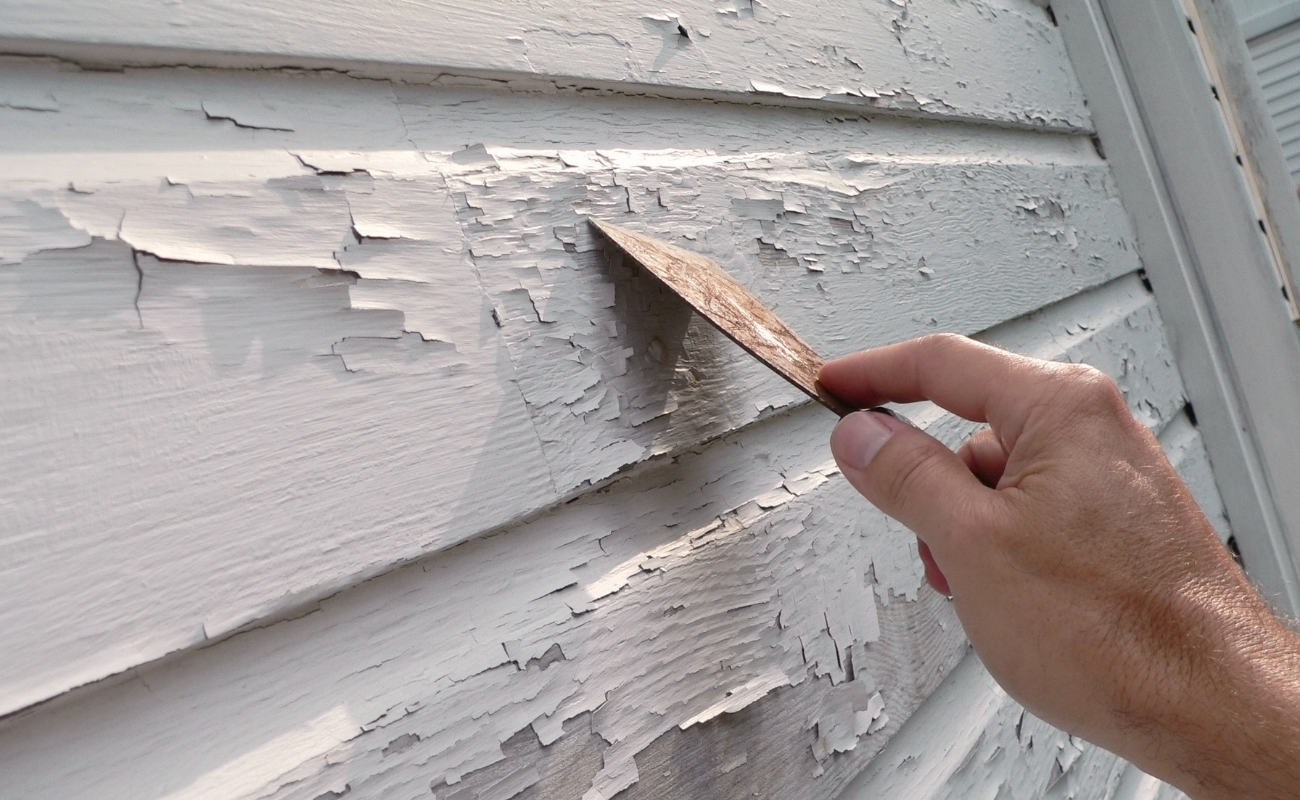Peeling paint driving you crazy? We’ve all been there – those annoying flakes and cracks that just won’t go away. Whether it’s from high humidity, poor preparation, or just plain old paint, peeling paint can make any room look shabby.
The good news? You can tackle this problem head-on and restore your walls to their smooth, fresh look. In this guide, we’ll walk you through exactly how to fix peeling paint. From getting rid of the damaged spots to making sure it doesn’t happen again, we’ve got you covered. We’ll also share the exact process we use in our interior house painting services.
Key Takeaways:
- This blog provides a step-by-step guide on how to fix peeling paint and prevent future chipping.
- Proper preparation, sanding, and priming are key to ensuring a lasting, smooth finish.
- Our easy-to-follow steps to fix and prevent peeling paint.
What Causes Paint to Peel? Common Culprits Behind the Problem
In the last blog, we discussed what causes paint to blister. But before we discuss the fix, it’s important to understand why your paint is peeling in the first place. Here are some of the usual suspects causing peeling paint on walls and ceilings:
- Old Calcimine Paint: If you have an older home, there might be calcimine paint underneath, which doesn’t play well with modern paints. Applying new paint on top of calcimine often leads to flaking.
- Water Woes: Leaks, high humidity, or water damage can mess with the paint’s ability to stick to the wall. This constant moisture creates bubbles that eventually peel away. Knowing how to fix peeling paint due to water issues is crucial to keep your walls looking fresh.
- Too Many Paint Layers: Sometimes, there’s just too much paint on your walls! Adding layer after layer can make the paint too heavy, which leads to peeling. Ceilings are especially prone to this because of gravity.
- Humidity and Poor Ventilation: Walls in rooms with high humidity and little ventilation are at risk of peeling paint. The moisture seeps in and breaks down the paint’s grip on the wall. We’ll show you how to fix peeling paint in these tricky areas for a lasting finish.
- Skipping Prep Work: Paint needs a clean, prepped surface to stick. Skipping the proper prep – like cleaning and priming – is one of the biggest reasons why paint ends up peeling. Fixing peeling paint starts with learning how to properly prepare the wall.
- Dirty Surfaces: Dirt, grease, and dust can act like a barrier between the wall and the paint, leading to poor adhesion. If you paint over a dirty surface, peeling is almost guaranteed.
- Heat Exposure: Extreme heat can make paint dry too fast and lose its adhesive properties, leading to peeling.
- Sunlight: Direct sunlight can break down paint over time. Latex paints expand and contract, which weakens their bond and eventually causes peeling.
Is Your Paint Still Good to Use? Here’s How to Check
Before you start fixing peeling paint, make sure your leftover paint is still usable. Here’s a quick check:
- Check the Label: Look for an expiration date on the can. Latex paint usually lasts up to 15 years; oil-based paints can last up to 20 years if stored correctly.
- Surface Film: If there’s a hard layer on top, gently break through it. If the paint underneath is still smooth and mixable, it’s probably good to use.
- Smell Test: Does the paint smell like rotten eggs? If so, it’s gone bad and you’ll need to get a fresh can.
- Stirring Test: If the paint has separated, give it a good stir. If it comes back to its original consistency, it’s safe to use.
What We Use: Tools and Materials for Fixing Peeling Paint
Appaloosa Painting Co., we use these tools and materials to tackle peeling paint and make sure the project is done right:
Tools:
- Protective gear (masks, gloves, goggles)
- Plastic drop cloths or tarps
- Wire brush or paint scraper
- Putty knife
- Paint roller or brush
Materials:
- Painter’s tape
- Patching compound
- Fine-grit sandpaper
- Primer
- High-quality paint
How to Fix Peeling Paint?
Now, let’s walk you through how to fix peeling paint, step by step, just like our pros do it.
Step 1: Prep the Space
First things first – we prep the area. We lay down plastic drop cloths to catch any mess and tape off trim or baseboards to keep things clean. We move furniture and rugs out of the way or cover them up to avoid splatters. And yes, we always wear protective gear like masks, gloves, and goggles!
Step 2: Remove Loose Paint
With a wire brush or paint scraper, we gently remove all the peeling paint. This is a key step in how to fix peeling paint – you want to get rid of all those loose flakes without damaging the surface beneath.
Step 3: Patch It Up
Once we’ve scraped away the peeling paint, we check for any cracks or holes. We use a patching compound and a putty knife to fill them in. After that, we smooth out the surface and let it dry. Patching up these imperfections is crucial for an even, lasting finish.
Step 4: Smooth Things Out
Sanding is next! We use fine-grit sandpaper to smooth out the area, ensuring it’s level with the rest of the wall. We run our hand over the surface to make sure it’s ready for the next step in fixing peeling paint.
Step 5: Clean the Surface
A clean surface is essential for the new paint to stick properly. We wipe down the area with a tack cloth or a damp sponge, then dry it off with a clean rag. This is a must-do step to ensure the paint adheres and looks smooth.
Step 6: Apply Primer
If moisture caused the peeling paint, primer is your best friend. We apply a high-quality primer to seal the surface and create a solid base for the new paint. This step is vital in how to fix peeling paint and prevent it from happening again.
Step 7: Time to Repaint
Finally, we’re ready to paint! We apply the first coat evenly and allow it to dry thoroughly. For a durable finish, we usually apply a second coat. Once the paint is dry, we remove the tape, clean up, and voilà – your wall is as good as new!
Wrapping Up
How to fix peeling paint? Fixing peeling paint doesn’t have to be a headache. By understanding the causes and following the right steps, you can restore your walls to their former glory. At Appaloosa Painting Co., we use these exact methods to deliver top-notch painting services in Charles Town, Martinsburg, and surrounding areas. We handle everything, from preparation to clean-up, so you don’t have to worry about a thing.
Ready for a paint project that lasts? We’ll guide you through every step and help pick the right products to suit your needs. Call us at 540-202-7600 for a FREE estimate today!



